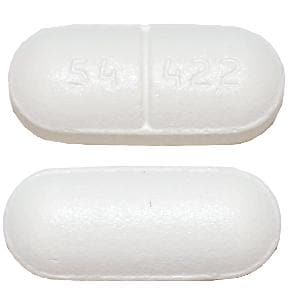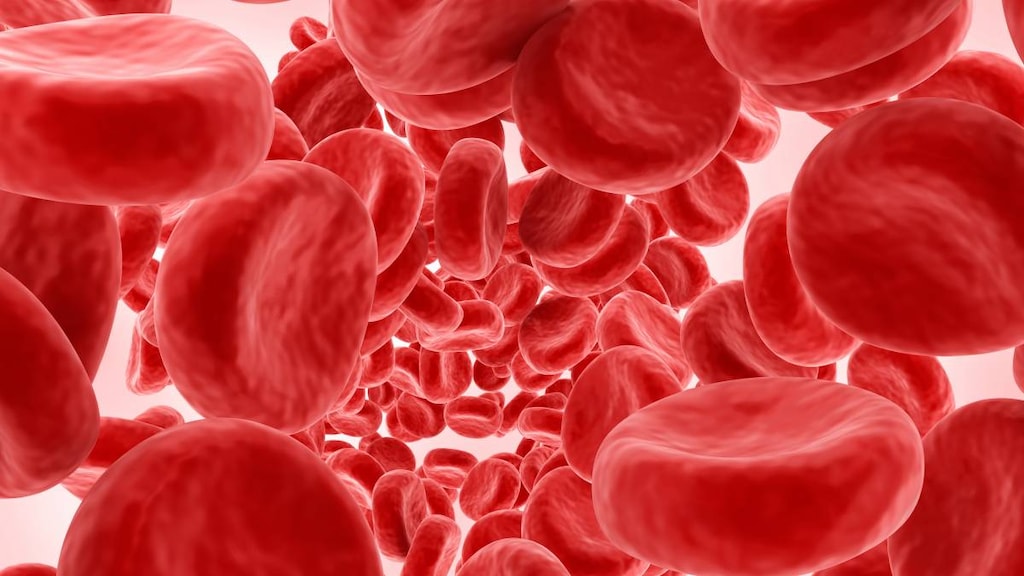Boxed Warning
Agranulocytosis/Neutropenia:
Deferiprone can cause agranulocytosis that can lead to serious infections and death. Neutropenia may precede the development of agranulocytosis. Measure the ANC before starting deferiprone therapy and monitor the ANC weekly during therapy. Interrupt deferiprone therapy if infection develops and monitor the ANC more frequently. Advise patients taking deferiprone to report immediately any symptoms indicative of infection.
Dosage Forms
Excipient information presented when available (limited, particularly for generics); consult specific product labeling.
Solution, Oral:
Ferriprox: 100 mg/mL (500 mL) [contains fd&c yellow #6 (sunset yellow); cherry-peppermint flavor]
Tablet, Oral:
Ferriprox: 500 mg, 1000 mg [scored]
Pharmacology
Mechanism of Action
Iron-chelating agent with affinity for ferric ion (iron III); binds to ferric ion and forms a 3:1 (deferiprone:iron) complex which is excreted in the urine. Has a lower affinity for other metals such as copper, aluminum, and zinc.
Pharmacokinetics/Pharmacodynamics
Absorption
Rapid
Distribution
1.6 L/kg (in thalassemia patients)
Metabolism
Primarily by UGT 1A6; major metabolite (3-O-glucuronide) lacks iron-binding capacity
Excretion
Urine (75% to 90%; primarily as metabolite)
Time to Peak
~1-2 hours
Half-Life Elimination
~2 hours
Protein Binding
<10%
Use: Labeled Indications
Transfusional iron overload: Treatment of transfusional iron overload due to thalassemia syndromes with inadequate response to other chelation therapy.
Limitation of use: Safety and effectiveness have not been established for the treatment of transfusional iron overload in patients with other chronic anemias.
Contraindications
Hypersensitivity to deferiprone or any component of the formulation
Canadian labeling: Additional contraindications (not in US labeling): Severe neutropenia (ANC <500/mm3); pregnancy; breastfeeding
Dosage and Administration
Dosing: Adult
Note: Round dose to the nearest 250 mg (or ½ of 500 mg tablet), 500 mg (or ½ of 1,000 mg tablet) or 2.5 mL (oral solution). If serum ferritin falls consistently below 500 mcg/L, consider temporary treatment interruption until serum ferritin rises above 500 mcg/L.
Transfusional iron overload: Oral: Initial: 25 mg/kg 3 times/day (75 mg/kg/day); individualize dose based on response and therapeutic goal; maximum dose: 33 mg/kg 3 times/day (99 mg/kg/day).
Dosing: Geriatric
Refer to adult dosing. Begin at the low end of dosing range.
Dosing: Adjustment for Toxicity
ANC <1,500/mm3 and >500/mm3: Interrupt treatment immediately and monitor until recovery; do not rechallenge unless the potential benefit outweighs the risk.
ANC <500/mm3: In addition to treatment interruption, consider hospitalization (and other clinically-appropriate management); do not resume unless the potential benefits outweigh potential risks
Infection: Interrupt treatment; monitor ANC more frequently
Administration
Administer in the morning, at midday, and in the evening. Administration with food may decrease nausea. Administer after at least a 4-hour interval with medications or supplements containing polyvalent cations (eg, iron, aluminum, zinc).
Dietary Considerations
May be taken with food to decrease nausea. Allow at least a 4-hour interval with foods containing iron, aluminum, and zinc.
Storage
Store at 20°C to 25°C (68°F to 77°F); excursions permitted to 15°C to 30°C (59°F to 86°F). Store oral solution in original carton to protect from light; use contents within 35 days after first opening bottle; discard any remaining solution after 35 days.
Deferiprone Images
Drug Interactions
Myelosuppressive Agents: May enhance the neutropenic effect of Deferiprone. Management: Avoid the concomitant use of deferiprone and myelosuppressive agents whenever possible. If this combination cannot be avoided, monitor the absolute neutrophil count more closely. Consider therapy modification
Polyvalent Cation Containing Products: May decrease the serum concentration of Deferiprone. Management: Separate administration of deferiprone and oral medications or supplements that contain polyvalent cations by at least 4 hours. Consider therapy modification
UGT1A6 Inhibitors: May increase the serum concentration of Deferiprone. Avoid combination
Adverse Reactions
>10%:
Gastrointestinal: Nausea (13%)
Genitourinary: Urine discoloration (15%)
1% to 10%:
Central nervous system: Headache (2% to 3%)
Gastrointestinal: Vomiting (10%), abdominal distress (≤10%), abdominal pain (≤10%), increased appetite (4%), diarrhea (3%), dyspepsia (2%), weight gain (2%), decreased appetite (1%)
Hematologic & oncologic: Neutropenia (6%), agranulocytosis (2%)
Hepatic: Increased serum alanine aminotransferase (7% to 8%), increased serum aspartate aminotransferase (1%)
Neuromuscular and skeletal: Arthralgia (10%), back pain (2%), limb pain (2%), arthropathy (1%)
<1%, postmarketing, and/or case reports: Abnormal gait, acute respiratory distress syndrome, anaphylactic shock, atrial fibrillation, bruxism, cardiac failure, cerebellar syndrome, cerebral hemorrhage, chills, chondrolysis of articular cartilage, cryptococcosis (cutaneous infection), decreased serum zinc, dehydration, depression, diaphoresis, diplopia, drowsiness, encephalitis (enteroviral), enterocolitis, epistaxis, fever, furuncle, gastric ulcer, glycosuria, hemoglobinuria, hemoptysis, Henoch-Schönlein purpura, hepatitis A, hepatomegaly, hypersensitivity reaction, hypertension, male hypospadias, hypotension, increased creatine phosphokinase in blood specimen, increased intracranial pressure, increased serum bilirubin, jaundice, metabolic acidosis, motor dysfunction (pyramidal tract syndrome), multi-organ failure, myositis, obsessive compulsive disorder, pancreatitis, pancytopenia, papilledema, parotid gland enlargement, periorbital edema, peripheral edema, pharyngitis, pneumonia, pruritus, psychomotor impairment, pulmonary embolism, pustular rash, rectal hemorrhage, retinal toxicity, seizure, sepsis, skin photosensitivity, skin rash, subcutaneous abscess, thrombocythemia, trismus, urticaria
Warnings/Precautions
Concerns related to adverse effects:
- Agranulocytosis//Neutropenia: [US Boxed Warning]: May cause agranulocytosis, which could lead to serious infections (some fatal). Agranulocytosis may be preceded by neutropenia; monitor absolute neutrophil count (ANC) prior to treatment initiation and weekly during therapy. If infection develops, interrupt treatment and monitor ANC more frequently. Patients should promptly report any symptoms which may indicate infection. Interrupt treatment if neutropenia (ANC <1,500/mm3) develops; withhold any other medications which may also be associated with neutropenia; monitor CBC, corrected WBC, ANC, and platelets daily until ANC recovery. If ANC <500/mm3, consider hospitalization (and other clinically appropriate management); do not resume or rechallenge unless the potential benefits outweigh potential risks. Neutropenia and agranulocytosis were generally reversible upon discontinuation. The mechanism for deferiprone-induced agranulocytosis is not known. Avoid concurrent use with other agents associated with neutropenia (or agranulocytosis).
- Hepatotoxicity: Elevations in ALT values have been observed; monitor ALT and consider treatment interruption for persistent elevations.
- Hypersensitivity: Hypersensitivity reactions have been reported (eg, Henoch-Schönlein purpura [immunoglobulin A vasculitis], urticaria, and periorbital edema with skin rash).
- Zinc deficiency: Lower plasma zinc concentrations have been observed; monitor zinc levels and supplement if necessary.
Concurrent drug therapy issues:
- Drug-drug interactions: Potentially significant interactions may exist, requiring dose or frequency adjustment, additional monitoring, and/or selection of alternative therapy. Consult drug interactions database for more detailed information.
Monitoring Parameters
Serum ferritin (every 2 to 3 months); ANC (at baseline and weekly during treatment); if ANC <1,500/mm3, monitor CBC, WBC (corrected for nucleated RBCs), ANC, and platelets daily until ANC recovery; ALT (monthly); zinc levels; signs or symptoms of infection; pregnancy status (prior to initiation and as clinically indicated).
Pregnancy
Pregnancy Considerations
Although there is limited data in humans, deferiprone may cause fetal harm if administered during pregnancy.
Verify pregnancy status prior to initiation of deferiprone treatment. Females of reproductive potential should use contraception during treatment and for 6 months after the last deferiprone dose. Males with female partners of reproductive potential should use effective contraception during therapy and for 3 months after the last deferiprone dose.
Patient Education
- Discuss specific use of drug and side effects with patient as it relates to treatment. (HCAHPS: During this hospital stay, were you given any medicine that you had not taken before? Before giving you any new medicine, how often did hospital staff tell you what the medicine was for? How often did hospital staff describe possible side effects in a way you could understand?)
- Patient may experience joint pain, abdominal pain, nausea, vomiting, or urine discoloration. Have patient report immediately to prescriber purple spots or redness of the skin or signs of infection (HCAHPS).
- Educate patient about signs of a significant reaction (eg, wheezing; chest tightness; fever; itching; bad cough; blue skin color; seizures; or swelling of face, lips, tongue, or throat). Note: This is not a comprehensive list of all side effects. Patient should consult prescriber for additional questions.
Intended Use and Disclaimer: Should not be printed and given to patients. This information is intended to serve as a concise initial reference for health care professionals to use when discussing medications with a patient. You must ultimately rely on your own discretion, experience, and judgment in diagnosing, treating, and advising patients.

